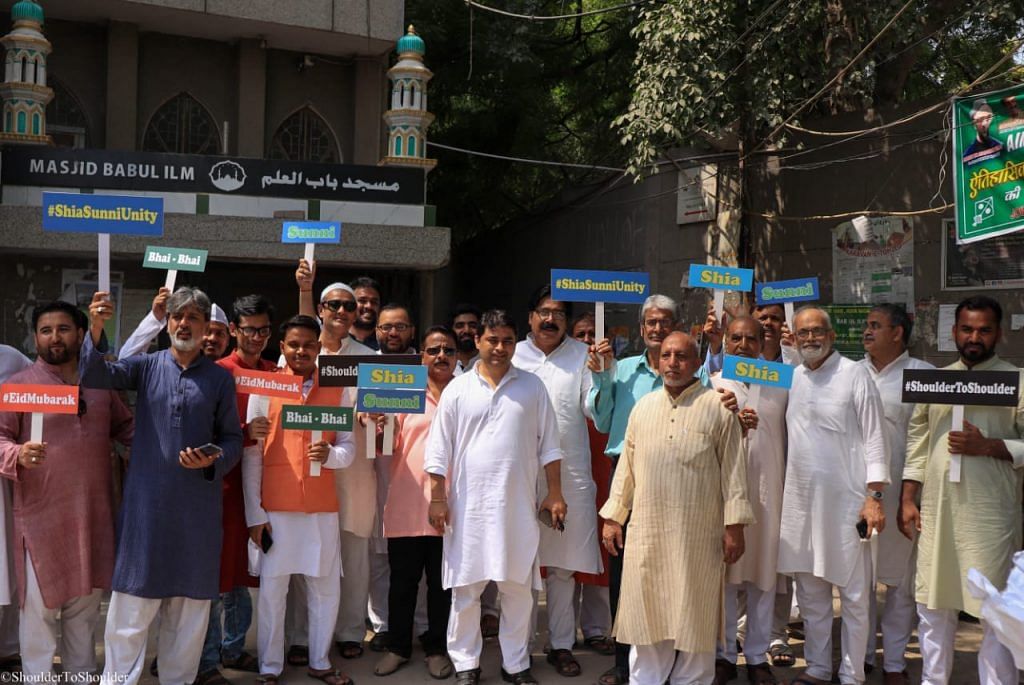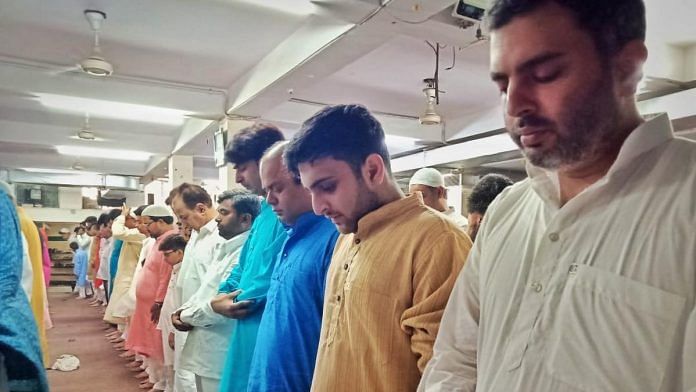New Delhi: When the Imam al-Sadiq Mosque, a Shia shrine in Kuwait, was bombed in 2015 by members of the Islamic State (IS) terror group, hundreds of Shias and Sunnis came together for prayers in mosques across the Arab nation to show solidarity.
Over 2,800 km away in Delhi, Syed Asad Haider Zaidi, an Indian with family in Kuwait, was so moved by the gesture that he wondered if he could attempt something similar back home to address the historical animosity between the Sunnis and Shias.
The result was the Shoulder to Shoulder movement, started by Zaidi and fellow Delhiite Mazin Khan, which oversees a joint Eid namaz at Masjid Babul Ilm, a Shia mosque, in New Delhi’s Jamia Nagar.
Just this Wednesday, Muslims from both branches of Islam again came together at the mosque as the world celebrated Eid, continuing a practice started in 2015.

Ancient differences
The differences between Shia and Sunni Muslims started shortly after Prophet Muhammad’s death in 632 AD, over the question of who his rightful successor was. The sectarian differences have magnified over the years and continue to be a motive for massive death and destruction.
Discussing how the joint namaz initiative came to life, Zaidi said he had initially discussed the idea with Khan, his colleague at Jamia Millia Islamia.
Khan’s father Zafar Ul Islam, who also happened to be the Delhi Minorities Commission chairman at the time, subsequently wrote to the maulana at the Jamia mosque, and the rest, as they say, is history.
“When I first started this in 2015, there were a few threats to me from Lucknow, but I didn’t listen to them and I won’t pay heed to them even now,” Zaidi said.
“There were some questions when we started the campaign and there will be some in the future,” added Ovais Sultan Khan, another founding member of the campaign, “The thing is not to bow down to them but rather work relentlessly on bringing communities together and spreading harmony among each other as Muslims.”
Soon, other mosques in Delhi began to experiment. Last year, in Jor Bagh in central Delhi, the Sunni community observed namaz under a Shia maulana at Shah-e-Mardan Mosque.
The Shoulder to Shoulder movement, say its founders, is not just committed to Shia-Sunni unity, but is working to forge harmony among different groups by performing regular community service at various temples, churches and gurdwaras.
They are also working to bring to India the “Who is Hussain” campaign, which was founded in the UK in 2012. The aim of the movement is to promote awareness about the life and legacy of Hussain ibn Ali, a grandson of the Prophet revered as the third Shia imam, to bring further understanding between the sects.



